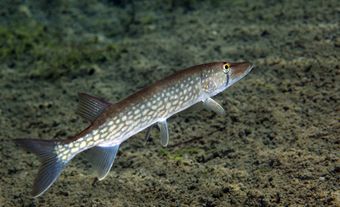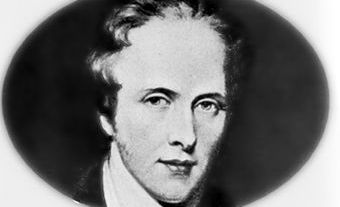Westerkamp, Hildegard
Hildegard Westerkamp. Audio artist, composer, teacher, b Osnabrück, West Germany, 8 Apr 1946, naturalized Canadian 1975; B MUS (British Columbia) 1972, MA (Simon Fraser) 1988. She studied flute and piano 1966-8 at the Conservatory of Music in Freiburg, West Germany, then immigrated to Vancouver 1968 to study at the University of British Columbia. In 1972, she married the Canadian poet and playwright Norbert Ruebsaat.
Activities 1973-91
Westerkamp worked as a research associate 1973-80 with R. Murray Schafer at the World Soundscape Project at Simon Fraser University (her work fed into Schafer's book The Tuning of the World, 1977) and in 1974 she began working as a producer and host at CFRO (Vancouver Cooperative Radio). These two experiences were pivotal to her career. She developed a deep concern about noise and the acoustic environment, and began to see music in a new light. She began to explore the possibilities of recording, processing, and mixing environmental sounds to create compositions in the recording studio. Around the same time, she was influenced by avant-garde composers like Pauline Oliveros and John Cage.
Westerkamp was a co-ordinator and researcher 1974-5 with the Noise Abatement Project of the Society Promoting Environmental Conservation in Vancouver; she was a researcher 1982 for the Women in Music project at Simon Fraser University, and there taught acoustic communication 1982-91 and worked with Barry Truax for her MA degree. In the 1980s, she developed an interest in music for live performance, and in creating installations and other "composed environments" (sometimes in collaboration) for specific sites. She also began composing soundtracks for radio dramas and film.
Activities after 1991
In 1991, Westerkamp brought her radio and university careers to a close and devoted herself to composing, lecturing, and writing, disseminating her compositions and ideas at concerts and conferences; in the years since, her productivity, creative range, and international profile have risen considerably. She has had some 75 concerts and broadcasts of her works, in addition to dozens of "soundwalks," sound installations, and exhibitions. This work has taken her to every major city in Canada; to London, New York, San Francisco, and other cities in the US and UK; to several cities in Germany; and to Australia, Austria, Belgium, Brazil, Finland, France, Holland, India, Israel, Japan, Sweden and Uruguay. She was editor 1991-95 of The Soundscape Newsletter (nos. 1-12) and in 2000 joined the editorial committee of Soundscape: The Journal of Acoustic Ecology, for the World Forum for Acoustic Ecology, of which she is a founder and board member.
Her Compositions
While some of her early music features traditional instruments with tape (eg, Fantasie for Horns II), Westerkamp's work draws material mostly from the acoustic environment - the noises (and silences) of urban, rural, and wilderness soundscapes; the voices of adults and children; the sounds of the media and of other cultures. She sometimes draws on traditional music; she is attracted to both the familiar and the foreign within a particular acoustic environment. Her subject matter ranges widely, from water (Sensitive Chaos) to human breath (Breathing Room). Some provocative pieces explore a particular subject, issue, or mood: Under the Flightpath documents life near a large airport, while Cool Drool illustrates the insidiousness of Muzak.
Westerkamp has tackled certain cherished subjects repeatedly. She has explored several sides of Vancouver - its skid row (A Walk Through the City), tonier neighbourhoods (Kits Beach Soundwalk), and street musicians (Streetmusic). She has musically explored BC - -its ghost towns (At the Edge of Wilderness), old-growth forests (Beneath the Forest Floor), and rain (Talking Rain). Since the 1990s, she has composed several pieces about India: Soniferous Garden, Attending to Sacred Matters, Gently Penetrating Beneath the Sounding Surfaces of Another Place, and more general works offering snapshots of the country's culture (Dhvani, India Sound Journal, Into the Labyrinth, the installation Nada).
Much of Westerkamp's music is personal in nature. Some of it incorporates her own texts, and poetry by Ruebsaat (Cordillera, Music from the Zone of Silence, A Walk Through the City, Whisper Study). Familie mit Pfiff (based on a Schubert tune) was composed for a family reunion, and Moments of Laughter features the voice of her daughter. Breaking News (commissioned by the CBC for the anniversary of the terrorist attacks of 11 Sept 2001) includes the voice of her infant grandson. Much of her work reflects her commitment to social causes like environmentalism (Voices for the Wilderness) and especially feminism: Women Voicing; His Master's Voice; École Polytechnique (composed in memory of the 14 women murdered 6 December 1989 at the University of Montreal). But there is whimsy, too, in Westerkamp's work. Harbour Symphony, written to celebrate the opening of Canada Place at Expo 86, was performed by more than 100 boathorns in Vancouver Harbour; a smaller version was performed in St John's Harbour in 1988.
Commissions and Awards
Nineteen of Westerkamp's works (the first in 1980) have been commissioned by Canadian and European organizations, including the Association of Canadian Women Composers, the Banff Centre for the Arts, the Canada Council, Canada Place at Expo 86, CBC Radio, CFRO, the Groupe de Musique Electroacoustique de Bourges, Montréal Musiques Actuelles, New Adventures in Sound, New Music America, Österreichischer Rundfunk, the Open Ears Festival, ORF/Ars Electronica, the Vancouver New Music Society, the Western Front Gallery, the Winnipeg New Music Festival, and the Zentrum für Kunst und Medien. Several of her works have earned recognition at American and European competitions.
Recordings
Since 1983, more than two dozen of her works have been released as recordings (some more than once), on labels including the Banff Centre for the Arts, the Canadian Society for Independent Radio Production, Diffusion i MéDIA, Earsay Productions, Inside the Soundscape, Les Editions Albani, and Radio Canada International (all Canada); Earth Ear, Nonsequitur, OO Discs, and Soundviews (all US); Kreis Osnabrücker Komponisten and Edition RZ (both Germany); and mk2 music (France). Her compositions, and occasionally her commentary, can also be heard on the Musicworks series of cassettes (Nos. 26, 31, 35, 42, and 45), and on CDs enclosed with the books Klang Wege, Site of Sound, SoundScapeDesign KlangWelten HörZeichen, Der Verlust der Stille, and S:ON - Le son dans l'art contemporain/Sound in Contemporary Canadian Art.
Memberships
Westerkamp is a member of the Association of Canadian Women Composers, the Canadian Association for Sound Ecology, the Canadian Electroacoustic Community, the Canadian League of Composers, the Deutsche Gesellschaft für Elektroakustische Musik, SOCAN, SODRAC, and the World Forum for Acoustic Ecology, and is an associate of the Canadian Music Centre.
Works
Compositions (for two-channel tape alone, unless otherwise noted)
Whisper Study (1975, 1979)
Familie mit Pfiff (Theme and Variations) (1976)
Fantasie for Horns I, four-channel tape (1978)
Fantasie for Horns II, French horn and four-channel tape (1979)
A Walk Through the City (1981)
Cool Drool, spoken voice and two-channel tape (1983)
His Master's Voice (1985)
Harbour Symphony, more than 100 boat horns (1986); rev. for 6 boat horns (1988)
Cricket Voice (1987)
Moments of Laughter, female voice and two-channel tape (1988)
Music from the Zone of Silence ("Desertwind," "Meditation," and "The Truth is Acoustic"), one to four voices and two-channel tape (1988)
Kits Beach Soundwalk, spoken voice and two-channel tape (1989)
with Norbert Ruebsaat, The Deep Blue Sea (text: Brian Shein), spoken voice and two-channel tape (1989)
Breathing Room (1990)
Breathing Room 2 (adaptation of "Desertwind"), two-channel tape, bottles, and audience (1990)
École Polytechnique, 8 church bells, mixed choir, bass clarinet, trumpet, percussion, and two-channel tape (1990)
My Horse and I (text: Sharon Thesen), spoken voice and two-channel tape (1991)
Breathing Room 3 - A Self-Portrait, spoken voice and two-channel tape (1991)
Beneath the Forest Floor (1992)
India Sound Journal, spoken voice and two-channel tape (1993)
Sensitive Chaos (1995)
Dhvani (1996)
Talking Rain (1997)
Gently Penetrating Beneath the Sounding Surfaces of Another Place (1997)
Into the Labyrinth, 8-channel diffusion (2000)
Attending to Sacred Matters, long and short versions (2002)
Like a Memory, piano and two digital soundtracks (2002)
Breaking News, one digital soundtrack (2002)
Composed environments and sound installations
Cordillera (Music from the New Wilderness Festival, Western Front Gallery, Vancouver, Feb 1980)
with Norbert Ruebsaat, Zone of Silence Story (Zone of Silence Project, Museum of Quebec, Quebec City, Dec 1985-Jan 1986
Coon Bay (1988)
Türen der Wahrnehmung (Ars Electronica '89, Linz, Austria, Sept 1989)
Nada - An Experience in Sound, in collaboration with Savinder Anand, Mona Madan, and Veena Sharma (Mati Ghar, Indira Gandhi National Centre for the Arts Janpath, New Delhi, India, 10-25 Dec, 1998)
At the Edge of Wilderness, in collaboration with photographer Florence Debeugny (Industrial Ear, Vancouver, Sept 8-16, 2000; Whyte Museum, Banff, 11 Oct, 2002-19 Jan , 2003; Victoria College of the Arts, Melbourne, 19-27 March, 2003)
Soniferous Garden, rev. of Part 4 of Nada (Engine 27, New York, 7-15 Nov, 2000; Sound Practice [first UKISC Conference on Sound Culture and Environments], Dartington College of Arts, UK, Feb 2001; CCNOA, Brussels, 2-9 Feb, 2003; x-tract Sculpture Musicale, Podewil, Berlin, 1-12 Apr, 2003)
Sound documents
Under the Flightpath (1981)
Streetmusic (1982)
Women Voicing (1985)
with Norbert Ruebsaat, Voices for the Wilderness (1986)
Convergence (1990)
One Visitor's Portrait of Banff (1992)
Soundtracks (for films, unless otherwise noted)
This Borrowed Land (NFB, 1982)
One Woman Waiting (Canada, 1982)
Streetkids (NFB, 1985)
Still Sane (Women in Focus, Canada, 1985)
Ranch (Canada, 1985)
Bones of the Forest (Canada, 1995)
Know, radio drama by Norbert Ruebsaat (CBC, 1998)
A Time of Love and War (Canada, 2000)
Elephant (US, 2003)
Last Days (US, 2004)
Writings
'ssh...'. Noise Handbook (Vancouver 1974)
'Soundwalking,' Sound Heritage, vol 3, no. 4, 1974
'The new Museum of Anthropology: an acoustic dump,' Musings, vol 2, Spring 1981
"Wilderness Lake: an interview with R. Murray Schafer," Musicworks, 15, Spring 1981
with Norbert Ruebsaat, "Acoustic ecology and the Zone of Silence," Musicworks, 31, Spring 1985
"A child's ritual," Musicworks, 35, Summer 1986
"Listening and soundmaking: a study of music-as-environment," MA thesis, Simon Fraser University 1988
"Lauschendes Radio-Radiolauschen," Kunstforum, 103, Sep-Oct 1989
"A little symposium on the Symposium: excerpts from a conversation between Norbert Ruebsaat and Hildegard Westerkamp on the outdoor events at the 1988 Sound Symposium in St John's, Newfoundland," Musicworks, 45, Winter 1990
"Cool Drool" and "Listening and Soundmaking," in Sound by Artists, ed. Dan Lander and Micah Lexier (Banff: Art Metropole and Walter Phillips Gallery, 1990)
with Helmut Kallmann and Adam P. Woog, "World Soundscape Project," EMC-2 (1992, 2004)
"Delhi mit den Ohren erforschen," Prisma, 1992, no. 2
"Say something about music," SoundNotes, 5, Fall/Winter 1993
"The soundscape on radio," in Radio Rethink: Art, Sound and Transmission, ed. Daina Augaitis and Dan Lander (Banff: Walter Philips Gallery, 1994)
"Soundscape Brasilia," Prisma, 1994, no. 2
"Listening to the Listening," panel presentation, ISEA95 (Montreal)
"UmweltKlang-HörErfahrung," in SoundScape Design KlangWelten HörZeichen, ed. Hans-Ulrich Werner (Basel: Akroama, 1997)
"NADA: an experience in sound," The New Soundscape Newsletter no. 9 (1998)
"Say something about music," in Site of Sound: of Architecture and the Ear, ed. Brandon LaBelle and Steve Roden (Los Angeles, Errant Bodies Press, 1999)
"Speaking from inside the soundscape," in From Awareness to Action (1999), proceedings of Stockholm Hey Listen!, conference on acoustic ecology (Sweden, June 1998); in The Book of Music and Nature, ed. Martha Ulvaeus and David Rothenberg (Middletown, CT: Wesleyan University Press, 2001)
"The local and global 'language' of environmental sound," in Sonic Geography Imagined and Remembered, ed. Ellen Waterman (Manotick, ON: Penumbra Press, 2002)
"Linking soundscape composition and acoustic ecology," Organised Sound, vol. 7, no. 1, 2002
"Bauhaus and soundscape studies: exploring connections and differences," in Anthologie: Multisensuelles Design, ed. Peter Luckner (Halle: Hochschule für Kunst und Design, 2003)

 Share on Facebook
Share on Facebook Share on X
Share on X Share by Email
Share by Email Share on Google Classroom
Share on Google Classroom


